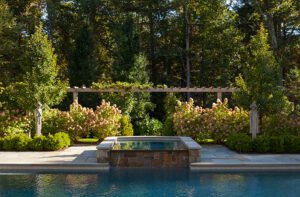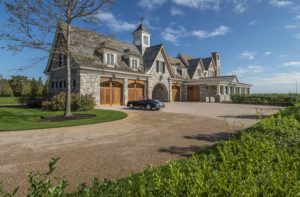Contemporary Vermont Design is Hot with Homeowners
February 24, 2021
Sponsored Content
Text by Kristin Amico
The Vermont housing market is surging. Urbanites are moving to greener landscapes, and longtime residents are building additions or renovating older homes. Many folks in both of these categories are drawn to contemporary Vermont design.
For a primer on the advantages of this vision of a Vermont home, and why it’s having a big moment in 2021, we spoke to Milford Cushman, a veteran designer who has called Vermont home for more than forty nine years. Milford is founder and president of Cushman Design Group in Stowe, Vermont.
Vermont Home Design Doesn’t Follow Traditional Rules
“One of the biggest elements in the contemporary architecture movement in Vermont is that spaces are designed to mesh with the world around them. The features of the home allow people to feel closer to the nature that’s so abundant here,” notes Cushman.
He explains that today architects and designers working on contemporary projects first listen to their clients to learn about how they wish to live alongside the natural environment, and then design around those desires
“The most exciting designs take the lead from the surrounding land, not from traditional floor plans,” says Cushman.”For example, in rural areas, you don’t need a Colonial-style layout with a front door facing the street and sidewalk. That formal convention doesn’t exist in wide-open spaces.”
Instead, he advises homeowners to create a layout that follows the sun. A porch can be placed facing west to watch the sun set at night, while a bedroom facing east fosters a more natural sleep cycle.
The Architecture Brings the Benefits of the Outdoors Inside
Another important design element is using light, windows, and other transparent or translucent structures to bring light in and provide maximum views. If you live within sight of a mountain, lake, or simply an expansive green space, Cushman Design Group will work with you to create a design that draws that outdoor feature in.
Cushman adds, “Providing a direct connection to the outdoors is a deliberate and intentional quality of modernism. Instead of having windows structured in identical rows, modern glass panels or large windows can be strategically placed to focus or enhance attention to specific views or natural elements.”
Traditional and Modern Materials Enhance Comfort
Stone, sustainably sourced lumber products, concrete—these are just a few of the materials that Cushman and his team use in innovative ways to build a lasting structure and one that creates a haven for homeowners.
“A goal of contemporary design is to use materials to foster a sense of comfort, to help homeowners feel like they are in a sanctuary,” says Cushman.
The team also considers materials as a way to build visual texture, acoustic properties, and a sense of space or depth. They approach new clients by asking what they want their home to sound like, or how they prefer the surfaces to feel, and then they take the feedback and create an ideal mix to satisfy the desired look and texture.
And, as Cushman notes, “the architecture and design become the artwork, so it’s imperative that all the materials blend into a seamless experience.”
Other Factors to Consider
Cost. While designs may embrace minimalism, costs for modern-building projects are typically higher than traditional-style homes. That’s due to multiple factors. First, there’s much less room for error in sleek walls or continuous surfaces that don’t have molding or finishing woodwork elements to cover gaps or small mistakes. There’s a higher degree of precision and craftsmanship needed. Second, the building materials are often higher grade to ensure an exact fit and long-term durability.
Design process. Cushman guides clients looking to start the process of a new design or remodel to find a designer or architect who first and foremost listens. Because the nature of contemporary design is so intertwined with the environment and how people want to feel within the home, the process should be a collaborative effort that includes both aesthetic and functional goals.
And while this trend toward homes that are deeply connected to the surrounding landscape has been on the rise for the last few years, Cushman says COVID-19 is accelerating that.
“We see more clients who want a holistic living experience. They are coming to Vermont and seeking contemporary space as a way to live more intentionally.”
Cushman Design Group, Stowe, Vermont, cushmandesign.com
Share
![NEH-Logo_Black[1] NEH-Logo_Black[1]](https://www.nehomemag.com/wp-content/uploads/2022/08/NEH-Logo_Black1-300x162.jpg)
















You must be logged in to post a comment.